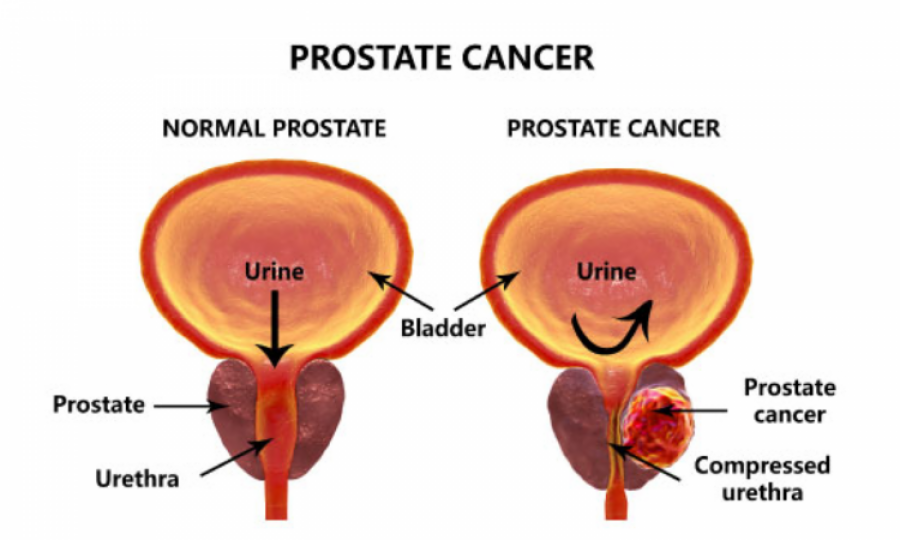The increasing incidence of prostate cancer

With an anticipated 1,414,000 new cancer cases and 375,304 deaths in 2020, prostate cancer is the second most often diagnosed disease and the fifth leading cause of cancer mortality among men globally. Prostate cancer is the most common cancer in 112 nations and the main cause of cancer death in 48. It is worth mentioning that the prevalence of prostate cancer is expected to rise due to population aging and economic expansion.
Prostate cancer risk factors include increasing age, black race, and family history. Meanwhile, other lifestyle and nutritional risk factors for prostate cancer, such as obesity, fitness, diabetes mellitus, dietary patterns, and vitamin E supplementation, have been identified. Furthermore, the human development index (HDI) is a summary assessment of each country's average accomplishment in important dimensions of human development such as life expectancy at birth, educational index, and per-capital gross national income.
What causes prostate cancer?
Although it is unknown what causes prostate cancer, a variety of factors might raise your chance of having the disease.
· Age: the risk increases with age, and the majority of cases are diagnosed in men over 50 years of age ethnic group
· Prostate cancer is more common in black men than in Asian men family history
· Having a brother or father who developed prostate cancer before the age of 60 appears to increase your risk of developing it; research also shows that having a close female relative who developed breast cancer may also increase your risk of developing prostate cancer
· Obesity: New study reveals a relationship between obesity and prostate cancer, and a healthy diet and regular exercise may reduce your chance of getting prostate cancer.
· Diet: research into the relationship between food and prostate cancer is ongoing, and there is some evidence that a high calcium diet is associated with an increased risk of developing prostate cancer.
Why prostate cancer is increasing?
Men's risk of prostate cancer rises dramatically as they age. Men over the age of 65 account for around 60% of all prostate cancer diagnoses.
Disease genes can run in families. Prostate cancer is the most heritable of the main malignancies, with genetic factors accounting for 58% of cases. Men who have a close family with prostate cancer are twice as likely to acquire the disease, and those who have two or more relatives are roughly four times as likely to be diagnosed. If afflicted family members were diagnosed before the age of 60, the risk is increased.
Some studies have revealed that inflammation in the prostate may be connected to prostate cancer, as noted under Prostate Cancer Risk Factors. One notion is that inflammation causes DNA damage in cells, which contributes to a normal cell becoming a cancer cell. More study in this area is required.
Exposure to radiation or cancer-causing substances can induce DNA changes in a variety of organs, although these variables have yet to be proven to be significant sources of mutations in prostate cells.
Conclusion
Prostate cancer develops when cells in the prostate gland begin to proliferate uncontrollably. The prostate gland is exclusively present in men. It produces some of the fluid found in sperm. As mentioned in Prostate Cancer Risk Factors, several research have found that inflammation in the prostate may be linked to prostate cancer. One theory holds that inflammation produces DNA damage in cells, which leads to the transformation of a normal cell into a cancer cell. More research is needed in this area. Exposure to radiation or cancer-causing compounds can cause DNA alterations in a number of organs, but it has yet to be established that these factors are substantial drivers of mutations in prostate cells.
Trending
Popular
Sindh pledges vigorous action to prevent poliovirus transmission
-
PMA stresses health equity on World ...
04:08 PM, 9 Apr, 2024 -
Dow University’s new rabies vaccine ...
12:18 PM, 28 Mar, 2024 -
IRD role lauded in advancing ...
02:53 PM, 12 Mar, 2024 -
Over one billion people worldwide ...
09:48 AM, 5 Mar, 2024




